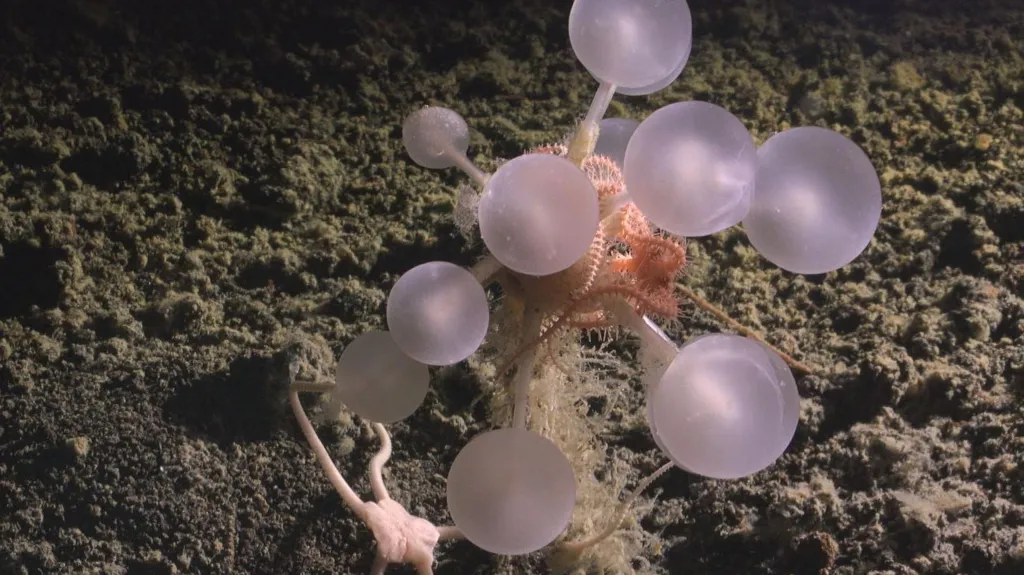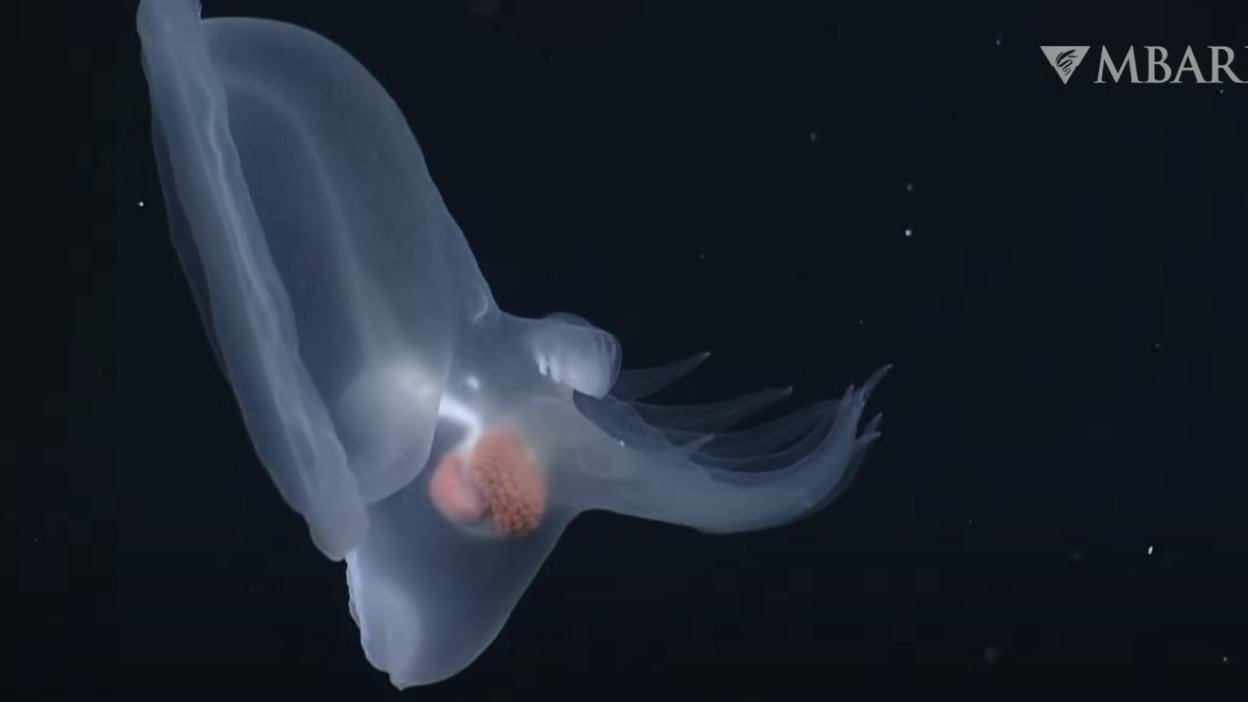Around the World in 80 Casts: Global Aquatic Wildlife Discoveries
November 11, 2025
November 11, 2025
Introduction
Welcome, fellow adventurers of the aquatic realm, to another weekly dispatch from the frontiers of marine discovery. This week, we cast our nets wide across the globe, from the frigid depths of Antarctica to the sun-drenched waters of the Pacific, to bring you the most bizarre, fascinating, and groundbreaking finds from the world of aquatic wildlife. The past seven days have been extraordinary, revealing creatures that defy imagination and behaviors that rewrite our understanding of life beneath the waves. We have tales of carnivorous sponges, ghostly mollusks that have eluded scientists for decades, entire underwater neighborhoods built by industrious fish, and a startling discovery about a familiar, yet mysterious, ocean drifter. So, bait your hooks and prepare to be amazed as we dive into this week's "Around the World in 80 Casts."

The "death-ball" sponge, a newly discovered carnivorous predator in the Antarctic depths.
1. The Carnivorous "Death-Ball" of the Antarctic
Our first stop takes us to the crushing pressures and eternal darkness of the Southern Ocean, 2.2 miles beneath the surface near Montagu Island. Here, a recent expedition by The Nippon Foundation-Nekton Ocean Census has unveiled a creature straight out of a science fiction novel: a carnivorous sponge nicknamed the "death-ball." This spherical predator, part of the Chondrocladia genus, is a far cry from the passive filter-feeders we typically associate with sponges. It is an active hunter, its body covered in a Velcro-like web of tiny hooks. Any small crustacean, such as a skeleton shrimp, that brushes against this seemingly innocuous orb is instantly doomed. The "death-ball" ensnares its prey and slowly absorbs it over time, a grim and patient form of predation. Dr. Michelle Taylor of the University of Essex, who led the voyage, described the sponge's hunting method as a "grim way of going." The discovery of this unique carnivorous behavior, along with 30 other new species found on the same expedition, highlights how much we still have to learn about the biodiversity of our planet's most remote and extreme environments.

The elusive Bathydevius caudactylus, a "mystery mollusc" finally identified after 20 years of sightings.
2. The Ghostly Mollusc of Monterey Bay
For two decades, scientists at the Monterey Bay Aquarium Research Institute (MBARI) have been haunted by a "mystery mollusc." Glimpses of a translucent, glowing creature in the midnight zone, between 3,300 and 13,100 feet deep, left researchers baffled. Now, after 150 sightings and extensive genetic testing, the ghost has a name: *Bathydevius caudactylus*. This newly identified species of nudibranch, or sea slug, is unlike any other. It hunts with a large, transparent hood, trapping crustaceans like a deep-sea Venus flytrap. Its ghostly, see-through body provides the ultimate camouflage in the dark depths. But when threatened, it has a spectacular trick up its sleeve: it can detach one of its glowing, finger-like appendages, which then floats away as a brilliant decoy to distract predators. Steven Haddock, a senior scientist at MBARI, described the team's enchantment upon first witnessing this bioluminescent display. The identification of this new family of animal underscores the vast, unexplored wilderness of the deep sea and the incredible adaptations life has evolved to survive there.

A vast, geometric neighborhood of nests created by yellowfin notie fish on the Antarctic seafloor.
3. The Underwater Architects of Antarctica
While searching for Ernest Shackleton's lost ship *Endurance* in 2019, another expedition stumbled upon a discovery of a completely different nature. On the seafloor of the Weddell Sea, once hidden beneath the colossal A68 iceberg, researchers found hundreds of mysterious, dimple-like indentations arranged in vast, geometric patterns. These were not geological formations, but the meticulously constructed nests of the yellowfin notie fish (*Lindbergichthys nudifrons*). In a paper published just last week, scientists described this "vast, geometric fish neighborhood," a sprawling underwater community of over 1,000 nests. The arrangement is a remarkable example of the "selfish herd" theory, where individuals cluster together for protection. Males guard the eggs for four long months, and the close proximity of the nests provides a collective defense against predators like brittle stars and ribbon worms. This discovery, made possible by the calving of a massive iceberg, offers a rare glimpse into the complex social behaviors and survival strategies of fish in the extreme environment of the Antarctic.

A new species of Portuguese man o' war, pushed north into Japanese waters by warming currents.
4. A New Man O' War Drifts into Japanese Waters
Our final discovery brings us to the warmer waters of northeast Japan, where a student-led research group has identified a new species of Portuguese man o' war. This finding is significant not only for the discovery of a new species, but also for what it tells us about our changing oceans. The arrival of this previously unseen species in Japanese waters is believed to be a direct consequence of warming ocean currents, a clear indicator of the far-reaching impacts of climate change on marine ecosystems. The Portuguese man o' war, often mistaken for a jellyfish, is actually a siphonophore – a colony of individual organisms working together. This new species, with its own unique characteristics, serves as a stark reminder that the distribution of marine life is in flux, with species being pushed into new territories as their traditional habitats become less hospitable. This discovery, published in the journal *Frontiers*, highlights the urgent need to understand and protect our oceans in the face of a rapidly changing climate.
Conclusion
From the inventive architecture of Antarctic fish to the ghostly defenses of a deep-sea slug, this week's discoveries have once again demonstrated the boundless ingenuity and mystery of the aquatic world. Each new species, each new behavior, adds another piece to the grand puzzle of life on Earth. These findings are not just curiosities; they are vital data points that help us understand the health of our oceans and the profound ways in which they are changing. As we continue to explore the depths, we are reminded of how much is still unknown, and how critical it is to protect these fragile ecosystems and the incredible creatures that call them home. Join us again next week for another installment of "Around the World in 80 Casts," as we continue our journey into the heart of the planet's final frontier.
